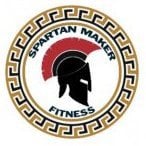A Thorough Pre And Post Op Sleeve Diet And Tips(Long)
-
Trending Products
-
Trending Topics
-

- 805 replies
- 43,525 views
-

- 26 replies
- 603 views
-

- 23 replies
- 1,286 views
-

- 24 replies
- 2,360 views
-

- 103 replies
- 8,968 views
-

- 26 replies
- 1,434 views
-
-
Recent Status Updates

















.thumb.jpg.8a9f9b91a64c233a229414beb1923b36.jpg)


